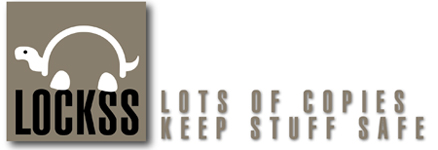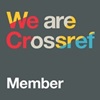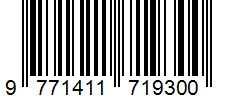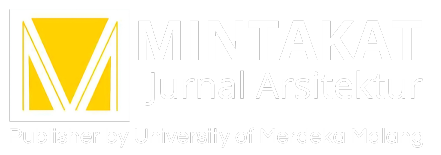- MINTAKAT: Jurnal Arsitektur Universitas Merdeka Malang began to be printed-publishing in 2000-2015.
- MINTAKAT: Jurnal Arsitektur Universitas Merdeka Malang even indexed on Google Scholar starting in 2017.
- MINTAKAT: Jurnal Arsitektur Universitas Merdeka Malang began to be indexed in the Garuda Portal from February 2020.
- MINTAKAT: Jurnal Arsitektur Universitas Merdeka Malang, since 2017 edition publishes biannual (March and September).
- MINTAKAT: Jurnal Arsitektur Universitas Merdeka Malang is national accredited SINTA 5 (SK Kemenristek/BRIN no. 200/M/KPT/2020 on December 23th, 2020.
- MINTAKAT: Jurnal Arsitektur Universitas Merdeka Malang is national accredited SINTA 4 (Decree Number: 75/E/KPT/2023, May 11th, 2020, start form Volume 23 No. 2 year 2022 until Volume 28 No. 1 year 2027.)
About the Journal
Summary
Mintakat: Journal of Architecture (MJA), has been published online since 2017 by Universitas Merdeka Malang. MJA is issued twice per volume, in March and September. It serves as a publication platform for architecture-related works, including both scientific papers and design projects. Scientific papers featured in MJA stem from research findings, original critical ideas, and journal reviews. Meanwhile, the published design works include built projects as well as conceptual models developed through academic elaboration by faculty members, students, and/or professional architects. The core discussion topics in architecture revolve around architectural entities in the form of space and architectural form across various scales (interior design, buildings, and urban or regional planning), key contributing factors (humans, society, and the environment), and value systems (social, cultural, and economic). There are no restrictions on the scope or depth of the writings, whether they are scientific papers or design projects. However, contributions are expected to align with multidisciplinary or interdisciplinary approaches in thought and problem-solving. The editorial team may also designate specific themes or topics for certain editions. MJA welcomes submissions from experts, practitioners, and anyone interested in contributing original works that have not been published in other print media.
Accreditation
![]()
Mintakat: Jurnal Arsitektur (MJA) has been Accredited Rank 4 as a scientific journal under the decree of the Ministry of Research, Technology and Higher Education of the Republic of Indonesia, Decree Number: 75/E/KPT/2023, May 11th, 2020, start form Volume 23 No. 2 year 2022 until Volume 28 No. 1 year 2027.
ISSN Number
![]()
Mintakat: Jurnal Arsitektur (MJA) Online ISSN 2654-4059 | Print ISSN 1411-7193 | DOI 10.26905 |
Editorial Policies
- Focus and Scope
- Publication Frequency
- Privacy Statement
- Open Acces Policy
- Plagiarism Policy
- Copyright Notice
- Archiving
- Peer Review Process
- Publication Ethics
- Author Fees
- Indexing and Abstracting
- Journal History
Focus and Scope

Mintakat: Journal of Architecture (MJA) is a peer-reviewed, open access journal that aims to advance the understanding and practice of sustainability in the realms of management. Mintakat: Journal of Architecture (MJA), an electronic journal, provides a forum for publishing the original research articles, review articles from contributors, and the novel technology news related to management.
Publication Frequency

Mintakat: Journal of Architecture (MJA), has been published online since 2017 by Universitas Merdeka Malang. MJA is issued twice per volume, in March and September.
Privacy Statement
![]()
The names and email addresses entered in this journal site will be used exclusively for the stated purposes of this journal and will not be made available for any other purpose or to any other party.
Open Acces Policy
![]()
Mintakat: Journal of Architecture (MJA) is loyal to open access for academic work. All the original articles and review papers published in this journal are free to access immediately from the date of publication. We don’t charge any fees for any reader to download articles. Mintakat: Journal of Architecture (MJA) provides immediate open access to its content on the principle that making research freely available to the public supports a greater global exchange of knowledge.
Plagiarism Policy

In this publication, Mintakat: Journal of Architecture (MJA) strongly opposes plagiarism because of its own abilities. Mintakat: Journal of Architecture (MJA) is committed to blocking plagiarism, including self-plagiarism.
The author must ensure that the author has written the original work fully if the author has used the work and/or words of others who have been quoted correctly, and if found indications of plagiarism (above 25%) in the text, then Mintakat: Journal of Architecture (MJA) automatically has the right to reject the manuscript. Mintakat: Journal of Architecture (MJA) strongly recommends, too, an important part of the manuscript before it is published. The author also appreciates writing in Mintakat: Journal of Architecture (MJA) about publications, duplicates, or excessive fraud.
Before the author submits the manuscript to Mintakat: Journal of Architecture (MJA) at least to examine the use of plagiarism. When submitting articles published for authenticity checks, Mintakat: Journal of Architecture (MJA) recommends the use of Turnitin, a Scanner from TURNITIN. Before using Turnitin Plagiarism for the first time, we strongly recommend that the writer read the instructions for using this plagiarism detector. The plagiarism detection system for Mintakat: Journal of Architecture (MJA) uses and is affiliated with Turnitin.
* Please note that the Mintakat: Journal of Architecture (MJA) is affiliated with Turnitin. *
The article has not been published in other media and does not contain plagiarism. Preferably the author must use reference management software, for example, Mendeley. Bibliography and reference system for Mintakat: Journal of Architecture (MJA) using Mendeley.
Copyright Notice
Authors who publish in this journal agree to the following terms: Mintakat: Journal of Architecture (MJA) by University of Merdeka Malang is licensed under Creative Commons Attribution-ShareAlike 4.0 International. Creative Commons Attribution-ShareAlike 4.0 International License (CC BY 4.0) is applied when mandated by research funders, such as those who have signed. Open Access articles in Mintakat: Journal of Architecture (MJA) are published under theCreative Commons Attribution-ShareAlike 4.0 International (CC BY 4.0) license. The copyright of the received article shall be assigned to the journal as the publisher of the journal. The intended copyright includes the right to publish the article in various forms (including reprints). The journal maintains the publishing rights to the published articles. Authors must agree to the copyright transfer agreement by checking the Copyright Notice column at the initial stage when submitting the article.
Archiving

Mintakat: Journal of Architecture (MJA) utilizes the LOCKSS system to create a distributed archiving system among participating libraries and permits those libraries to create permanent archives of the journal for purposes of preservation and restoration. More...
Peer Review Process
![]()
Every article submitted to the editor will be received first by the staff editor then selected the selection editor for the next stage. the next stage through the Initial Review process by the selection Editor. The selection editor will continue the article to the reviewer stage and sent it to the editorial board and the executive editor will follow the next selection of the Review Process stage. After that, the article of the review process will be sent to the selection editor to be received or returned to the author for revision. This process takes a month for a maximum time. In each manuscript, the editorial board and peer reviewers will be assessed from substantial and technical aspects.
All submitted manuscripts are read by editorial staff. the manuscript evaluated by the editor becomes incompatible with journal criteria rejected immediately without any external reviews. The manuscript evaluated to be a potential interest for our readers is sent to two reviewer desks. The editor then makes a decision based on reviewers' recommendations of several possibilities: rejected, revision required, or accepted. The editor has the right to decide which manuscripts submitted to the journal should be published.
Review Process:
- The author submits the script
- Editor's Evaluation (some manuscripts denied or returned before the review process)
- Double-blind peer review process
- Editor's Decision
- Confirm to an author
Publication Ethics
Our ethic statements are based on COPE’s Best Practice Guidelines for Mintakat: Journal of Architecture (MJA).

Multiple, Redundant, or Concurrent Publication
Authorship should be limited to those who have made a significant contribution to the conception, design, execution, or interpretation of the reported study. All those who have made significant contributions should be listed as co-authors. Where there are others who have participated in certain substantive aspects of the research project, they should be acknowledged or listed as contributors.
Author Fees

This journal charges the following author fees.
Author Fees
This journal charges the following author fees.
Article Submission: 0.00 (IDR)
Authors are required to pay an Article Submission Fee as part of the submission process to contribute to review costs.
Fast-Track Review: 0.00 (IDR)
With the payment of this fee, the review, editorial decision, and author notification on this manuscript is guaranteed to take place within 4 weeks.
Article Publication: 0.00 (IDR)
If this paper is accepted for publication, you will be asked to pay an Article Publication Fee to cover publications costs.
If you do not have funds to pay such fees, you will have an opportunity to waive each fee. We do not want fees to prevent the publication of worthy work.
Indexing and Abstracting

Journal History














